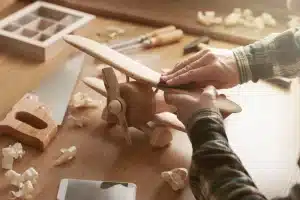The Influence of Art and Design in Toy Manufacturing
Introduction
Art and design play a crucial role in shaping the world around us. From architectural marvels to stunning visual masterpieces, their impact is undeniable. But did you know that art and design also hold significant influence in the manufacturing of toys? In this article, we will explore how the creative disciplines of art and design shape the toy industry, enhancing the play experiences of children worldwide.
The Artistry of Toy Design
Toy manufacturing is an artistic endeavor in itself. Skilled designers with a keen eye for aesthetics craft toys that captivate the imagination and bring joy to children. They carefully consider color palettes, shapes, proportions, and textures to create visually appealing toys that are both stimulating and engaging. By leveraging artistic principles, toy designers create toys that not only entertain but also inspire creativity and cognitive development in children.
Features Influenced by Art and Design
The art and design influence in toy manufacturing can be seen in various features of toys. Let’s take a look at some of the key aspects influenced by these creative disciplines:
- Innovative Shapes and Forms: Artistic principles allow toy designers to explore unique shapes and forms that are visually interesting and ergonomic, making toys comfortable to hold and play with.
- Vibrant Colors and Patterns: By incorporating vibrant colors and patterns, toy designers create visually stimulating toys that attract the attention of children and provide a sensory experience during play.
- Attention to Detail: The meticulous attention to detail in toy design is a testament to the influence of art. Intricate patterns, realistic textures, and refined finishes elevate the quality and appeal of toys.
- Imaginative Characters and Storylines: Artistic creativity brings forth imaginative characters and storylines that enrich the play experience. From action figures to plush toys, these artistic influences create compelling narratives for children to engage with.
- Interactive and Educational Features: Through art and design, toy manufacturers incorporate interactive and educational features in their products. From puzzles that stimulate problem-solving skills to building sets that encourage spatial awareness, these toys facilitate learning through play.
- Sustainable and Eco-Friendly Design: Art and design have also influenced the toy industry’s movement towards sustainable and eco-friendly practices. Many manufacturers now prioritize using materials that are safe, non-toxic, and environmentally friendly, ensuring a healthier planet for future generations.
The Role of Art and Design in Children’s Development
The influence of art and design in toy manufacturing goes beyond aesthetics. Studies have shown that children benefit from toys that are thoughtfully designed with artistic principles in mind. By engaging with visually stimulating toys, children develop their visual and spatial perception, fine motor skills, and cognitive abilities. Furthermore, imaginative play facilitated by artistic toy design allows children to explore their creativity, express emotions, and foster social skills.
Conclusion
The influence of art and design in toy manufacturing cannot be understated. This creative synergy shapes the very essence of toys, elevating them from simple playthings to valuable tools for growth and development. As we continue to appreciate the importance of art and design, let us celebrate the power they wield in enhancing the play experiences and shaping the futures of generations to come.





